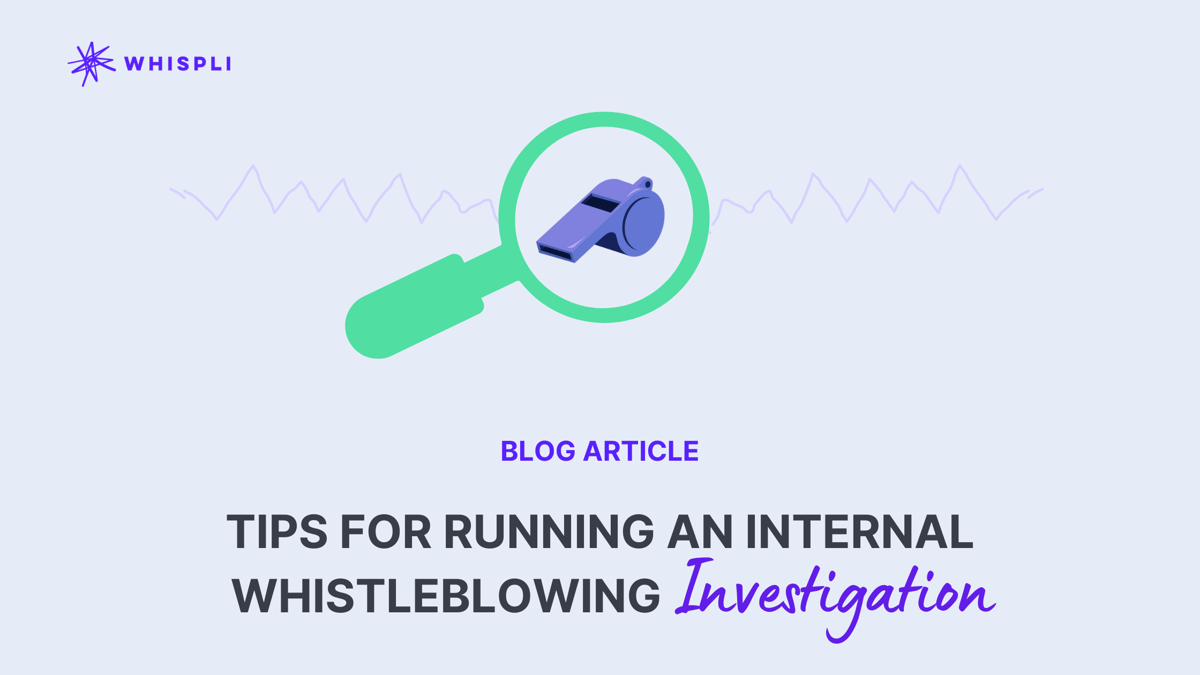Tips For Running An Internal Whistleblower Investigation

Many organisations believe that once they have written a code of ethics & conduct, and made it accessible on their intranet, that the job is done.
❌ This could not be further from the truth.
There are many reasons why an internal investigation needs to take place - fraud, HR, corruption, safety concerns etc.
But how an organisation reacts to claims can be just as important as the claim itself.
Reporting Methods
Before an allegation can be made, an organisation needs to setup up methods for team members to communicate through. It is recommended to give informants a variety of options:
- Phone
- Face-to-face
- Anonymous reporting form
⤷ This allows the informant the ability to choose the method that they feel most comfortable with.
It is also important to ensure all team members are aware of the communication methods and the procedure to use them - therefore regularly communicating their existence is essential.
Having posters in lunch/break rooms, including details (URL links) on the intranet or in pay slips or sending regular team emails, are just some methods organizations could adopt.
Investigation Workflow
Once you have received a claim it is important to have a clear investigation workflow on hand for you to follow to ensure that the investigation is followed in a thorough manner.
Timeframe
Set a time frame for communicating with the informant and ensure that they have the support they require.
⤷ Making your investigation a priority and resolving it as quickly as possible also ensures that misconduct can be stopped quicker, that any corrective action can be taken sooner, and that innocent matters and people can be cleared as soon as possible.
Collect data
Whilst investigating a claim, it is important to remain as unbiased as possible and to not let your own feelings cloud the issue. Therefore it is important to collect as much data as possible.
Collect data/evidence from the informant, but also independently gather data. This will aid you in seeing the whole picture.
Interview
In many cases, your investigation will entail you having to interview multiple people, not just the informant.
- When interviewing team members it is important to empathise with these people and clearly communicate your intentions and ensure that the interviewee is as comfortable as possible.
- Keep all emotion at the door. Even if the interviewee provides data that makes you angry you must keep level-headed and remember why you are there - to gather information.
✔️ Within Whispli you can create multiple custom workflows that you can use to guide your investigation depending on your requirements.
Treat all claims seriously
Building a “speak up” culture is of the utmost importance to organizations but once you have given your teams the ability to speak up you can quickly destroy that goodwill by not treating the claim and the informant seriously.
Even if the claim is ridiculous it is important to follow your investigation process thoroughly to, at the very least, give the informant the feeling that their information and time are valuable.
Concluding an investigation
✅ When concluding an investigation there are several things that you will need to do:
- Final Report - Prepare a final report that shows your workflow, the initial report made by the informant, your investigation, evidence and conclusion (business impact etc). It would also be important to include any recommendations on how to ensure that the wrongdoing cannot be repeated
- Communicate - Communicate to the informant and any other team members you have dealt with during the investigation that the investigation has now been concluded and that you thank them for their help, inputs and insights.
& in case you did not know yet...
Whispli allows you to export your own custom reports into Word (.docx) format. You have the ability to create your own template and upload it onto the platform so that you can export a fully branded report at the click of a button. Find out more in the Account Settings section of Whispli.





